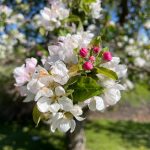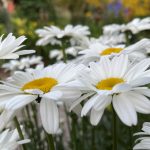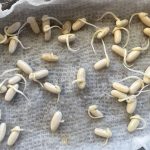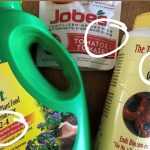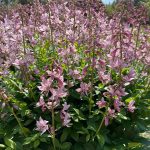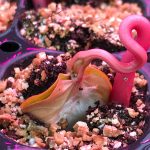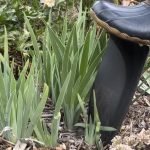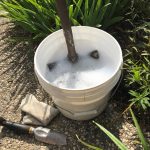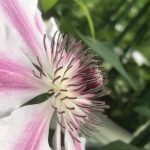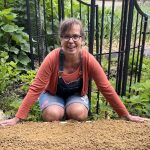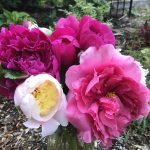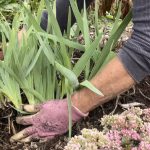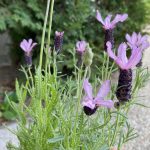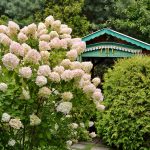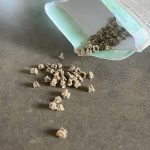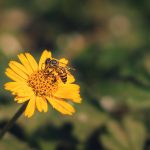Hyacinths are delightful early spring flowers that come from fall-planted bulbs.
These fragrant and colourful flowers are easy to grow and can add a touch of elegance to any sun garden or indoor space as a cut flower.
Let’s explore all things Hyacinth, from choosing and planting Hyacinth bulbs to caring for them throughout their growth, and we will cover all the essential steps you need to take to ensure your Hyacinths bloom beautifully.
A Brief Overview of Hyacinths and Their Characteristics
Hyacinths, with their vibrant colours and enchanting fragrance, are a member of the Asparagus family and are native to the eastern Mediterranean region.
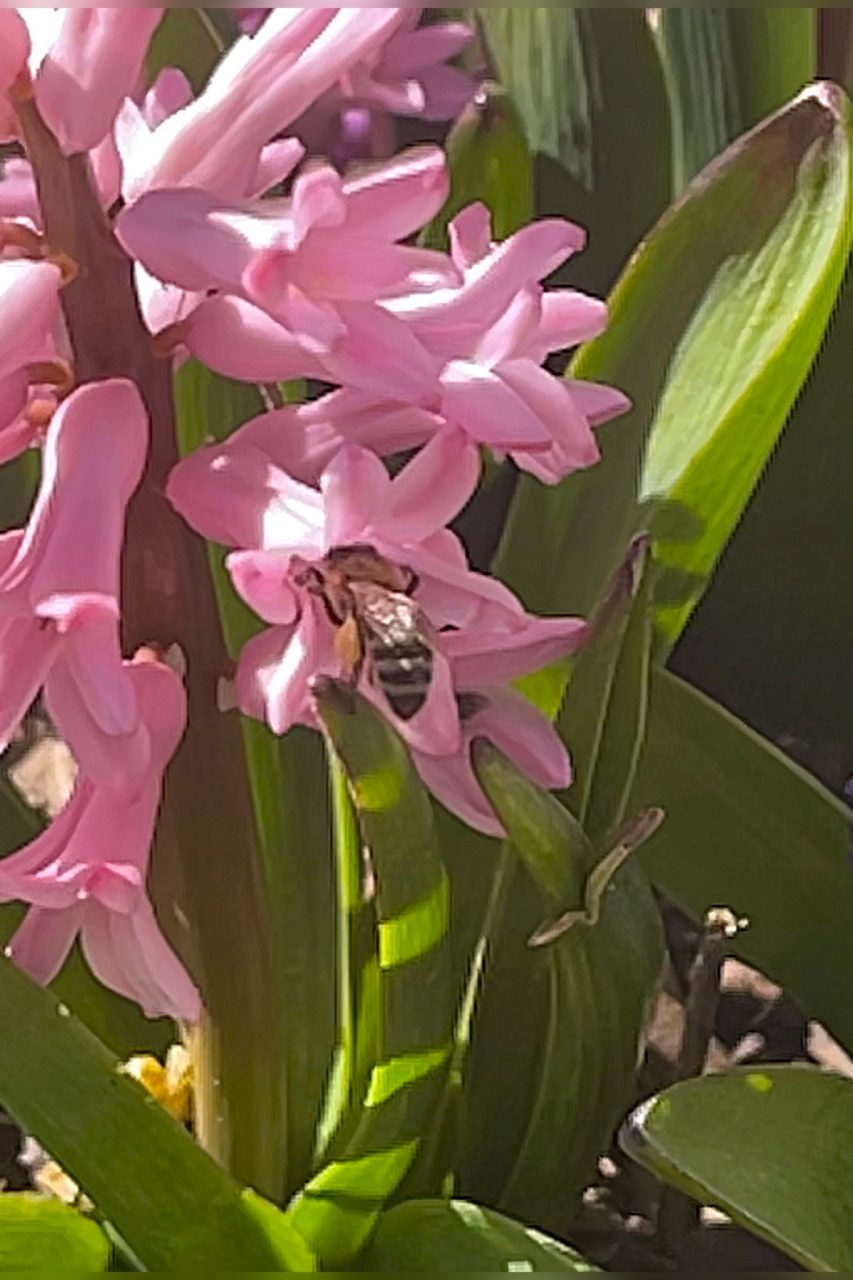
Hyacinths are known for their dense, intensely fragrant spring clusters of bell-shaped flowers available in numerous shades, including orange, lavender, purple, pink, white, and yellow.
After their spring show of flowers, Hyacinth plants gradually die back and go dormant.
These clump-forming plants are hardy in Plant Zones 4-8, making Hyacinths a good choice for Canadian gardens, and their early spring flowering makes them perfect for sunny pollinator, alpine, and rock gardens.
Hyacinths typically last 3-4 years as their flower clusters gradually get smaller because our North American climate doesn’t supply all the conditions for the bulbs to continually replicate.
The Best Garden Location to Grow Hyacinths
Hyacinths, like all plants, require proper sunlight and soil conditions to thrive and bloom to their fullest potential.
Hyacinths are sun-loving plants requiring at least six hours of sunlight daily. They will grow well in east, south, and west-facing flower beds.
Hyacinths prefer rich, fertile, and well-draining soil. As with all bulbs, Hyacinths will develop bulb-rot if the soil stays too wet.
Tips on Selecting Healthy Hyacinth Bulbs
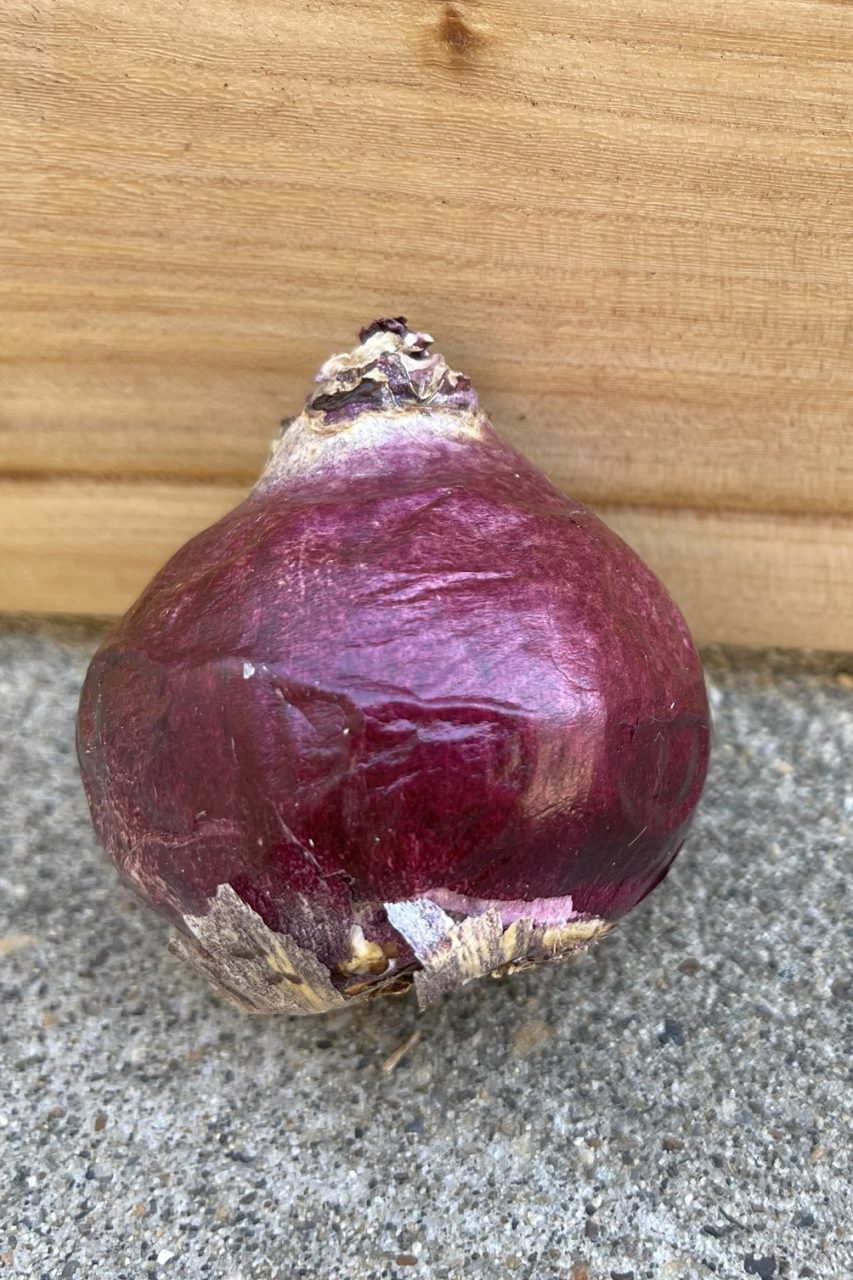
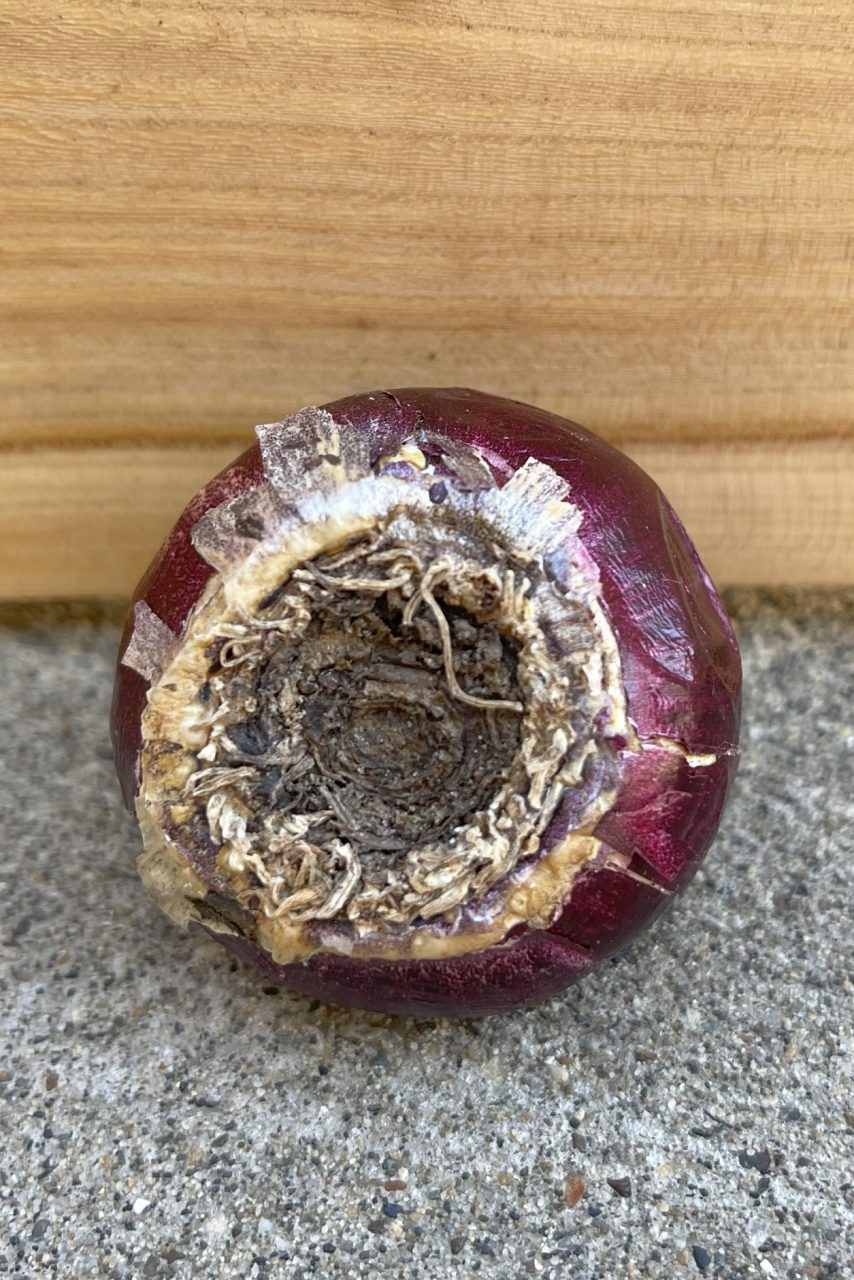
When it comes to growing fabulous Hyacinths, selecting the right bulbs is crucial, as healthy bulbs are the foundation for beautiful blooms and vigorous, vibrant plants.
Here are some tips to help you choose the right hyacinth bulbs for your garden:
- It is recommended that gardeners use gloves when handling Hyacinth bulbs and freshly cut stems, both can cause skin irritations.
- Examine the bulbs carefully before making a purchase and look for Hyacinth bulbs that are firm and plump, avoiding any that are soft, mouldy, or have signs of damage.
- A healthy bulb should have an intact tunic (outer layer or skin) free from blemishes, and it should sit snug against the bulb.
- Consider the size of the bulb as well. Larger bulbs tend to produce bigger and more robust flowers. However, keep in mind that smaller bulbs can still have lovely blooms.

Want the inside scoop on more gardening tips? Get early access to all my blogs and exclusive content by signing up for my newsletter!
How to Plant Hyacinths Step-by-Step

The best time to plant Hyacinth bulbs in growing zones 3 and 4 is mid-September to mid-October.
Follow These Step-by-Step Instructions for Planting Hyacinth Bulbs:
1. Ensure the Right Hyacinth Growing Location
Hyacinths prefer well-draining soil in full sun or partial shade. Select a spot in your garden that receives at least 6 hours of direct sunlight daily.
2. Prepare the Soil for Hyacinth Bulbs
Start by removing any weeds or debris from the planting area. Hyacinths prefer fertile soil, so enrich it with organic matter like compost or well-rotted manure. This will provide essential nutrients and improve drainage.
3. Determine Proper Hyacinth Bulb Spacing

Hyacinths can be planted in clusters or individually. To save time later, lay out the Hyacinth bulbs on top of the soil before digging to guide the diameter of the hole.
Space Hyacinth bulbs approximately 10-15 cm (4-6″) apart to avoid overcrowding.
4. Bulb Planting Depth
The general rule of thumb with bulbs is to plant them at a depth roughly twice the bulb’s width.
Dig a hole about 5-8 cm (2-3″) deeper than this depth, enrich the soil at the bottom of the hole with some compost and add a little bone meal, if desired.
5. Bulb Positioning, Backfilling, & Watering
Position the bulbs with their growing tips facing upwards and the bulb’s basal root plate in direct contact with the soil at the bottom of the hole.
Cover the bulbs with soil, lightly firming them to eliminate air pockets.
The hole will be filled about 1/2 way at this point and water well.
Fill the hole to the surrounding soil level, do not water, and top with 5-7 cm (2-3″) of mulch, especially in Plant Hardiness Zones 3 and 4.
Related: What are Plant Hardiness Zones & How do They Work?
Mulch helps retain moisture, suppresses weed growth, and protects the bulbs from extreme winter temperatures.
Related: For more on planting fall bulbs, see The Ultimate Guide to Fall Bulbs
Watering and Fertilizing Hyacinths

When it comes to watering, Hyacinths prefer moist but well-drained soil.
Once planted, watered, and mulched in the fall, Hyacinth bulbs need no more attention in plant growing zones 3 and 4 as they begin to establish their root systems and then go dormant for the winter.
During the active growing season, typically in spring, Hyacinths benefit from regular watering.
Overwatering can lead to bulb rot, so striking the right balance is important.
Water Hyacinths in the spring when the top 2.5 cm (1″) of soil feels dry to the touch. This will prevent waterlogging and allow the roots to access the needed moisture.
In terms of fertilizing, Hyacinths benefit from a balanced and slow-release fertilizer in the spring, like granular 10-10-10 or 6-6-6.
You can apply a granular or liquid fertilizer formulated explicitly for flowering bulbs. Follow the instructions on the fertilizer package for the appropriate dosage and frequency.
Pruning and Supporting Hyacinths Stems
Hyacinth stems may become top-heavy, lean over, or droop as they grow and may need some support.
One method to support Hyacinth stems is to use short stakes or bamboo canes.
Insert the stake or cane into the soil near the base of the plant, being careful not to damage the bulb or roots.
Gently secure the stem to the stake using soft garden twine, plant ties, or Velcro plant ties. This will help keep the branches upright and prevent them from bending or breaking under their weight.
Should Hyacinths be Deadheaded?

As the Hyacinth blooms die, prune out the flower stems near the base using clean, sharp garden scissors or pruners.
Allow the Hyacinth foliage to die back naturally to allow the leaves as much time as possible to gather nutrients to fortify the bulbs below the ground.
Pruning Hyacinth foliage is only necessary if it becomes yellow or has completely died back and you’d like to clean up the clump aesthetically for the garden.
How to Cut Hyacinth Flowers
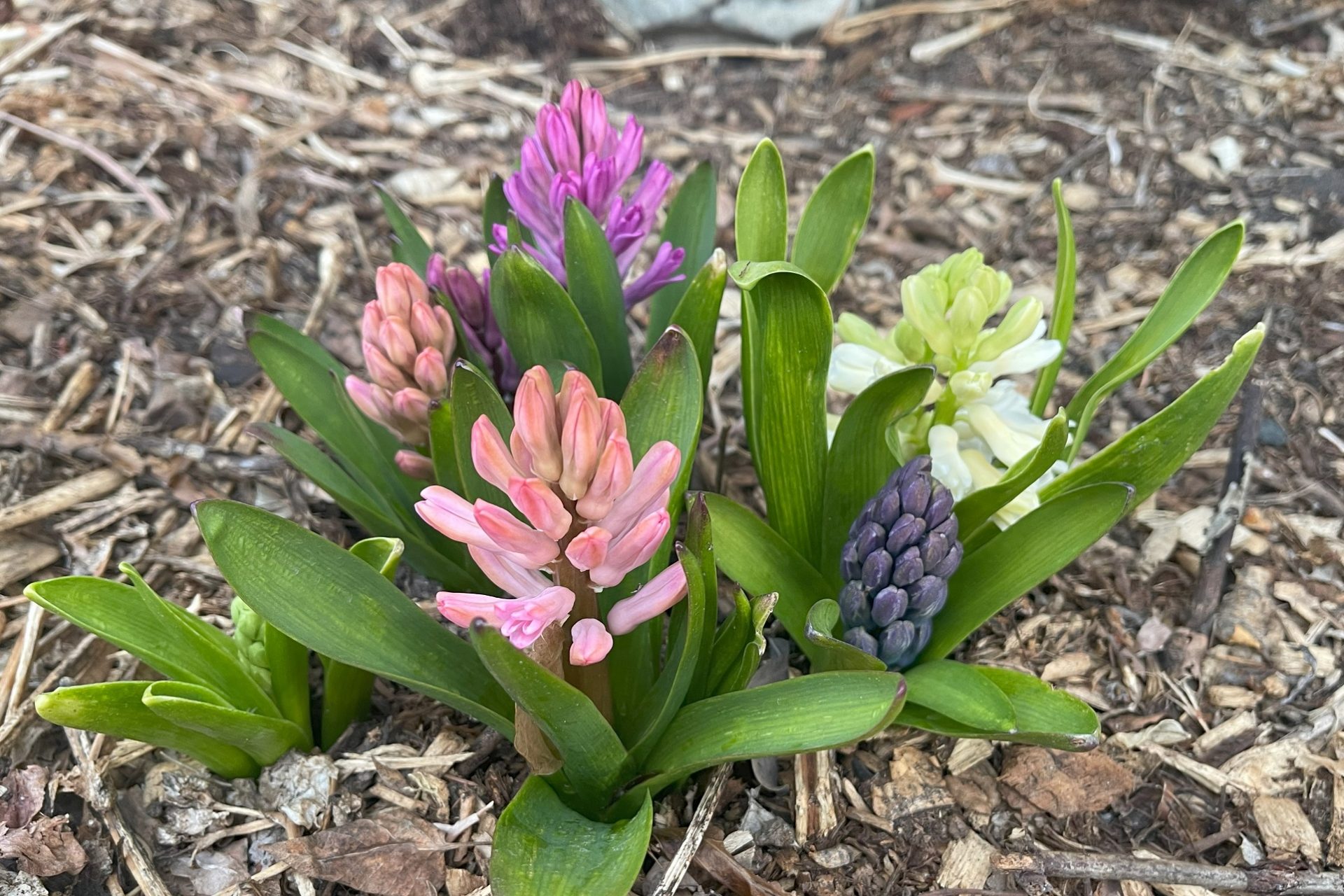
Once Hyacinths start showing colour in your garden, you may want to bring their vibrant colours and fragrant scent indoors.
It’s best to pick Hyacinth flower blossoms first thing in the morning after a full night of rehydrating and when they are in colour bud but have yet to open.
When cutting Hyacinths, use sharp and clean pruning shears, scissors, or a knife.
Make a clean diagonal cut at the base of the stem where the green stem meets the white part of the bulb to allow for maximum stem length and water absorption when placed in a vase with clean, room-temperature water.
Remove any excess foliage from the lower part of the stem to prevent as few leaves as possible from sitting in the water, which can cause bacterial growth.
Related: The Best Secrets to Making Cut Flowers Last
Summing Up Hyacinths
Whether you are a seasoned gardener or a beginner, growing Hyacinths can be a rewarding and enjoyable experience. Their beautiful blossoms will brighten up any space, and if you follow the above steps you’re aure to succeed!
So, prepare your gardening tools as fall approaches and watch your hyacinths bloom into a stunning display of nature’s beauty the following spring!
©Sharon Wallish Murphy ©Gardening with Sharon










